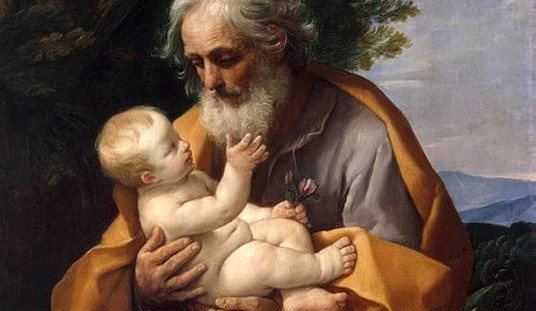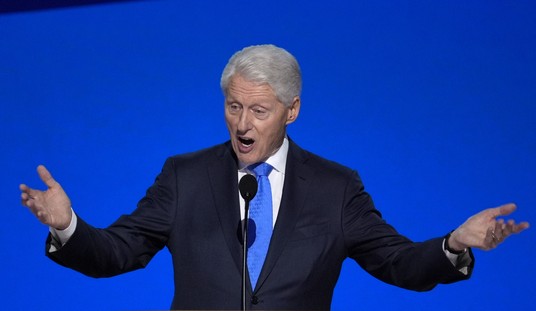Remember this poll the next time CBS reweights its sample to give Democrats a seven-point edge while declaring a slight bump upward in Barack Obama’s popularity, or when the WaPo poll sample improves to a D+7. Gallup had previously shown the partisan split narrowing in the electorate, and today Rasmussen has it at a razor-thin 1.2 points in favor of Democrats:
The number of Republicans in the United States grew in August while the number of Democrats slipped a bit and the gap between the parties fell to the smallest advantage for Democrats in five years.
In August, 35.0% of American Adults identified themselves as Democrats. That’s down nearly half a percentage point from a month ago and is the smallest percentage of Democrats ever recorded in nearly eight years of monthly tracking.
At the same time, the number of Republicans grew in August to 33.8%. That’s up two full percentage points from the month before and the largest number of Republicans recorded in 2010.
As has been the case in every month over the past eight years of tracking, there are more Democrats than Republicans in the nation. The gap is currently 1.2 percentage points. That’s the closest the Republicans have been to parity in more than five years, since July 2005.
It’s also the smallest gap between the parties heading into any of the recent campaign seasons. In August 2004, the Democrats had a 2.6 percentage point advantage. In August 2006, they enjoyed a 5.4 percentage point advantage. In August 2008, the gap was 5.7 percentage points.
In less than two years, Democrats have lost seven points in the general population, while Republicans have gained just one. Independents haven’t done much better, dropping two points to 31%. Although the GOP peaked at 37.4% just before the 2004 election, the current figure is at the top of the range otherwise, between 31-34% over the last several years.
Even though Democrats still lead — barely — Moe Lane says this spells disaster for the party of Barack Obama and Nancy Pelosi:
[E]xperience shows that a poll that samples 1,000 adults will have a result that is significantly different than one that samples 1,000 likely voters*. The trick is determining what a ‘likely voter’ is, which is why many pollsters at least try to work with the more quantifiable ‘registered voters:’ it doesn’t give you as good results, but it at least screens out the people who can’t vote. It’s also why pollsters try to find out who is enthusiastic about voting, and who isn’t. But that’s only half of the problem; the other half is determining whether or not the current partisan mix of voters has shifted since the last benchmark. That benchmark is usually an election; it’s a truism that, generally, Republicans vote for Republicans and Democrats vote for Democrats. So pollsters look at reliable exit polls, and they look at election results, and every so often they do new partisan identification polls.
And that’s what makes this such a problematic poll of Rasmussen’s for the Democrats. As the pollster noted, historically speaking:
In August 2004, the Democrats had a 2.6 percentage point advantage. In August 2006, they enjoyed a 5.4 percentage point advantage. In August 2008, the gap was 5.7 percentage points. See the History of Party Trends from January 2004 to the present.
…and if you look at the results for those years, you’ll notice that they trended between August and November in all three years towards the party that ended up ‘winning’ those particular election cycles. Which implies that the breakdown is going to be even worse for the Democrats in November. It might even be close to equal.
In other words, direction matters as much as static data points. The figures have been narrowing over the past year, inexorably drawing closer to each other. Think of it in Ghostbuster terms: the closer the streams come to crossing, the closer Democrats come to political annihilation, and the closer it comes, the more rapidly it narrows.
There are two other factors to consider, too. Republicans tend to outperform the partisan split in all elections, mainly because they tend to turn out slightly more to vote. That’s even more true in midterm elections, which in normal cycles tend to engage the imagination of voters less. In this midterm cycle, the enthusiasm gap at Gallup has surpassed twenty points between the parties, which means that even if Democrats have a registration advantage of 1.2%, the practical effect is to trail by several points in a generic Congressional contest — which we are also seeing in surveys that measure such questions.
Of course, we don’t elect generic Congresses, either, and individual candidates and campaigns matter. But the momentum is building for Republicans, and Moe is almost certainly right that the effective partisan split will favor Republicans by the time of the election.







Join the conversation as a VIP Member